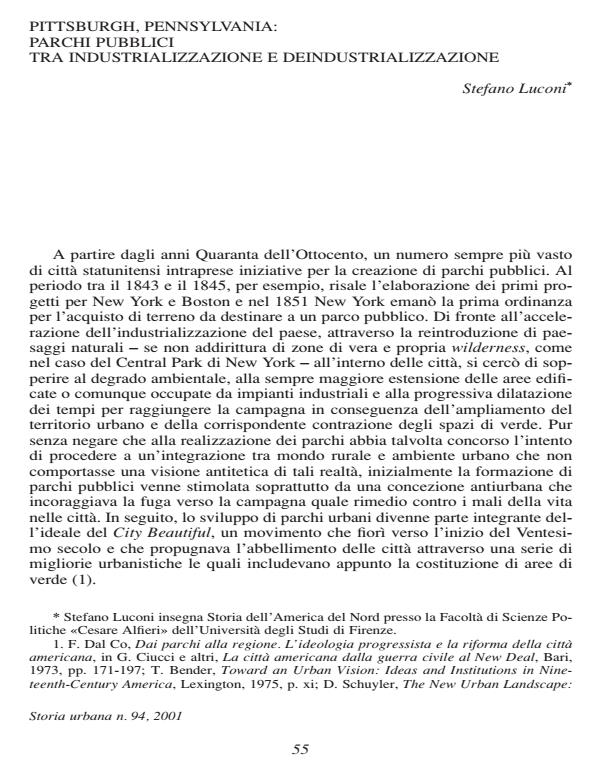Pittsburgh, Pennsylvania: parchi pubblici tra industrializzazione e deindustrializzazione
Titolo Rivista STORIA URBANA
Autori/Curatori Stefano Luconi
Anno di pubblicazione 2002 Fascicolo 2001/94
Lingua Italiano Numero pagine 16 P. Dimensione file 71 KB
DOI
Il DOI è il codice a barre della proprietà intellettuale: per saperne di più
clicca qui
Qui sotto puoi vedere in anteprima la prima pagina di questo articolo.
Se questo articolo ti interessa, lo puoi acquistare (e scaricare in formato pdf) seguendo le facili indicazioni per acquistare il download credit. Acquista Download Credits per scaricare questo Articolo in formato PDF

FrancoAngeli è membro della Publishers International Linking Association, Inc (PILA)associazione indipendente e non profit per facilitare (attraverso i servizi tecnologici implementati da CrossRef.org) l’accesso degli studiosi ai contenuti digitali nelle pubblicazioni professionali e scientifiche
The creation of public parks in Pittsburgh was strictly related to the rise and fall of this city as a leading center for the production of steel. In the face of a convulsive industrial growth in the last few decades of the XIX-century, parks were established to offset Pittsburgh’s unhealthy and smoky environment with bucolic settings that aimed at both letting residents relax and pacifying the city’s allegedly disruptive working class. Following the emergence of deindustrialization in the postwar years, the construction of Point and Mellon Parks became part of a broader program that intended to rescue Pittsburgh from urban blight and economic decline, to prevent the flight of corporations, to attract new investment, and to help the transition of the city to a service economy by improving, modernizing, and reconstructing its central business district.
Stefano Luconi, Pittsburgh, Pennsylvania: parchi pubblici tra industrializzazione e deindustrializzazione in "STORIA URBANA " 94/2001, pp , DOI: